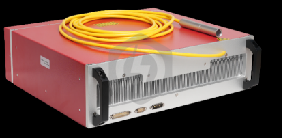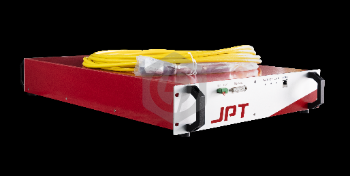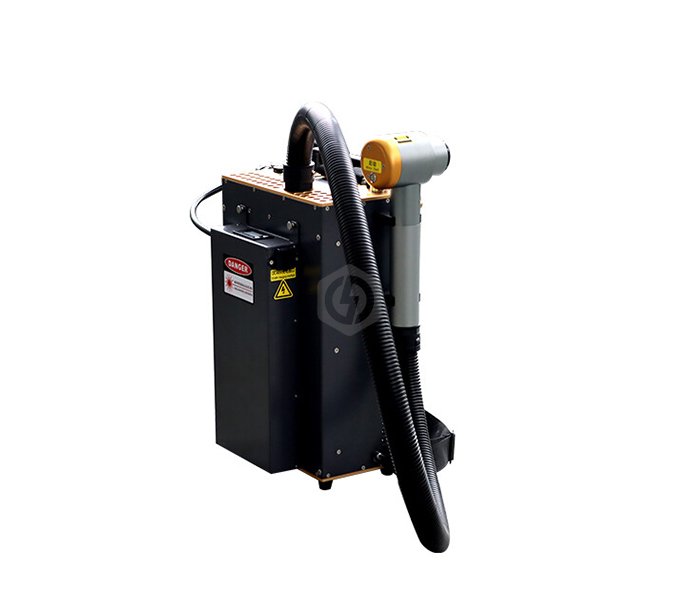FAQ
The principle of operation of a laser cleaner for oil cleaning mainly involves the physical properties of the laser and the chemical and physical properties of the oil.
The following is the basic principle of operation of a laser cleaner for cleaning oil contamination:
laser cleaners achieve effective cleaning results by heating, decomposing or evaporating oil-contaminated surfaces through the action of a high-energy laser beam.
This technology is particularly suitable for applications that require high precision and efficient cleaning, such as industrial production and maintenance areas.
There have 2 type laser Laser Cleaning Machine, different laser source, different laser head and software,
one called Pulse Laser Cleaner, and another called Continuous Laser Cleaning Machine:
You can see Pulse Laser Remove Oil from Below video:
You can also see Continuous Laser Cleaning for oil from below video
Taking the above factors into consideration, and based on specific cleaning needs and budget, you can choose the right model and type of laser cleaner.
When choosing a continuous laser cleaner or pulsed laser cleaner, there are several things to consider:
Laser principle of action:
Laser energy absorption: The laser cleaner irradiates the surface of the workpiece with a high energy laser beam.
These laser photons, when interacting with the surface, are partially absorbed by the surface material, resulting in localized heating and energy transfer.
Thermal effect: The laser's action on the oily surface generates high temperatures, thermalizing and decomposing the oil.
Photochemical effect: High energy lasers can also dissociate or chemically change oil molecules through photochemical reactions, helping to remove the dirt.
Treatment of oil contamination:
Oil Breakdown: High energy laser beams can break up or disintegrate oil molecules, making them easier to remove.
Evaporation and Removal: Some of the oil is evaporated or volatilized directly by the laser and the remaining residue can be removed by airflow or other means.
Advantages and applicability:
Non-Contact Cleaning: Laser cleaning is a non-contact cleaning technique that avoids the scratches or damage to surfaces that can be caused by physical brushing or high pressure water jets.
Precision and localization: Laser cleaners allow precise control of the position and energy of the laser beam so that it can be localized to the specific area to be cleaned.
Environmentally friendly and energy efficient: Compared to traditional chemical cleaning methods,
laser cleaning is more environmentally friendly and energy efficient as it does not require large quantities of water and chemical solvents, reducing chemical waste generation and emissions.
Overall,
Cleaning needs:
Cleaning object material: different materials have different surface characteristics and response to laser cleaning, such as metal, plastic, ceramics, etc.
Cleaning objectives: whether to remove surface dirt, grease, coatings or rust removal, removal of oxides, etc..
Shape and complexity of the surface to be cleaned: whether there are uneven special shapes that require fine cleaning control.
Laser equipment performance:
Power and Energy Density: Continuous laser cleaners typically have higher power for large, fast cleaning, while pulsed laser cleaners can provide higher energy density for fine cleaning tasks.
Laser beam quality: The stability and focusing of the laser beam is critical to the cleaning results and the quality parameters of the laser beam need to be considered.
Material properties and cleaning results:
Thermal sensitivity to materials: Continuous operation of a continuous laser cleaner may generate more heat, which may cause deformation or damage to heat-sensitive materials; whereas a pulsed laser cleaner can reduce the thermal impact due to shorter pulse times.
Cleaning efficiency and quality: It is necessary to evaluate the cleaning efficiency and quality of different types of laser cleaners in practical applications, including the degree of thoroughness of cleaning, surface finish, and so on.
Cost and maintenance:
Purchase and operating costs of the equipment: continuous laser cleaners are usually more expensive, but may be more efficient in large-area cleaning tasks; pulsed laser cleaners are usually less expensive, but may require more frequent maintenance and adjustments.
Maintenance and servicing needs: Maintenance and servicing may vary between different types of laser cleaners, and the stability and reliability of the equipment needs to be considered.
If you have large work of rust remove from metal sheet, choose an continuous laser cleaning machine, longer focus distance with powerful laser beam, which can help you remove dust quickly.
if you have varity cleaning work to do, an pulse laser cleaning machine will be good choice.
How to Choose the Perfect Pulse Laser Cleaner for Your Needs
Pulse laser cleaners have truly changed the game across various industries by offering a gentle yet effective way to clean surfaces without causing any damage.
Whether you're in manufacturing, automotive, aviation, or another field that requires meticulous cleaning, picking the right pulse laser cleaner is crucial.
Here’s a friendly guide to help you make an informed decision.
Understanding Pulse Laser Cleaning Technology
Before we dive into the selection process, it's important to understand what pulse laser cleaning is all about.
Pulse laser cleaning uses short bursts of high-intensity light to zap away contaminants like rust, paint, and oil from surfaces.
The beauty of this technology is that it can remove these unwanted materials without harming the underlying surface, making it perfect for delicate components.
Pulse Laser cleaner have different laser power like 100W 200W 300W 500W 1000W 2000W, also each power have different power energy like 2mj, 5mj, 15mj and 50mj,
How to choose the suitable one?
If you are beginner, you can thinking an 200W or 300W laser cleaner with pulse laser,
You can see different between 2mj 5mj and 15mj for 300W Laser cleaner
If you confused about choose 200W or 300W pulse laser cleaner, then check below video:
Top Recommendations for Pulse Laser Cleaners
300W Pulse Laser Cleaner with BOGONG CL2 series cabinet:
200W Pulse laser cleaner
Conclusion
Selecting the right pulse laser cleaner involves understanding your specific cleaning needs, evaluating material compatibility, and ease of operation.
By carefully assessing these elements and exploring top recommendations, you can invest in a laser cleaning solution that enhances efficiency, improves product quality, and delivers long-term value.
Contact BOGONG Machinery before choose an laser cleaner
Which is better pulse or continuous laser cleaner?
First we need to know the meaning of Pulse laser and continuous laser, these 2 laser are all fiber laser technical.
Pulse laser cleaning is a method that uses short, intense bursts of laser energy to remove dirt, grime, or other surface contaminants from an object without damaging the underlying material. Unlike continuous laser cleaning, which provides a constant beam of energy, pulse laser cleaning emits a series of rapid-fire laser pulses.

Continuous laser cleaning is a method that uses a constant beam of laser energy to remove dirt, grime, paint, rust, or other surface contaminants from materials. Unlike pulse laser cleaning, which emits short bursts of energy, continuous laser cleaning provides an uninterrupted stream of laser light, you can say continuous remove pollution layers by burn.

* If you want remove cover without hurt the surface of your production, then choose Pulse laser cleaning machine, like mould laser cleaning.
*Continuous laser cleaning is chosen for its ability to quickly and effectively remove layers of material where precision is less critical compared to pulse laser cleaning, which is better suited for more delicate or sensitive substrates.
the way these two types of laser cleaners work is actually pretty different. The continuous kind basically burns away the dirt with super high temperatures. But the pulse ones are a bit gentler—they shake the dirt loose instead. So, if you're worried about damaging whatever you're cleaning, the pulse laser might be your best bet
The wattage of a laser cleaning machine have 100W 200W 300W 500W 1000W 2000W 3000W, how to choose right laser power for me? it depends on the size and type of material being cleaned, also the laser power for pulse laser cleaning machine and continuous laser cleaning machine are different.
Generally, pulse laser have laser power like 100W 200W 300W 500W 1000W, Continuous laser cleaning machine have 1000W 2000W 3000W laser power,
if your products are small parts and delicate materials, you can thinking pulse laser 100W 200W or 300W, if you want mould laser cleaning, choose 300W or 500W pulse laser; 1000w pulse laser cleaning machine is a high powered industrial grade laser device, its high efficiency to remove pollution layers.
while higher wattage lasers are needed for larger areas and more stubborn contaminants, If you only have dust to remove, and no worry about surface, then you can thinking a 2000W or 3000W continuous laser cleaning machine.
Pulse Laser Cleaning vs. CW Laser Cleaning: Which One Is Right for You?
When it comes to laser cleaning, choosing the right technology can make or break your project. Whether you’re removing rust, paint, oil or other contaminants, understanding the difference between Pulse Laser Cleaning Machines and Continuous Wave (CW) Laser Cleaning Machines is key. Let’s dive into the details so you can decide which one suits your needs.
What Is CW Laser Cleaning?
CW (Continuous Wave) laser cleaning machines suit for large-scale jobs, especially when you need to remove rust from big areas quickly. These machines emit a continuous laser beam, which means the energy is released steadily. This makes CW lasers great for removing material fast, but it comes with a trade-off: heat. Since the energy is constantly being applied, the surface can get extremely hot—up to 400°C. CW lasers are best when you don’t need to worry too much about preserving the substrate and just want to get the job done quickly.
Why Choose Pulse Laser Cleaning?
Pulse laser cleaning machines work differently. Instead of a continuous beam, they release energy in short, intense bursts. This allows for much better control over how the laser interacts with the surface. The high-intensity pulses can effectively remove coatings through processes like sublimation, vaporization, and concussive detaching, all without overheating the material. Typically, the surface temperature stays between 50°C and 96°C, which is far safer for delicate substrates.
Pulse lasers are perfect for precision work. If you need to clean a surface without damaging it, especially if you’re preparing it for bonding or other treatments, pulse laser cleaning is the way to go. Plus, they generate less fume and smoke, making for a cleaner, safer work environment.
How to Decide: CW vs. Pulse Laser Cleaning
So, how do you choose between a CW and a pulse laser cleaning machine? It all boils down to your project needs.
Choose CW Laser Cleaning if you’re dealing with large areas of rust or need to remove material quickly, and the surface can handle high heat without warping or damage.
Opt for Pulse Laser Cleaning if precision is key, or if you need to protect the underlying material from heat damage while still effectively removing contaminants.
Understanding these differences helps you make an informed decision, ensuring you get the best results for your specific application. Whether you’re working on a large-scale industrial project or need to maintain the integrity of delicate surfaces, there’s a laser cleaning solution that’s right for you.
Pulse Laser is different with CW laser, pulse lasers emit a short burst of light at specific intervals, but continuous lasers emit a constant beam of light, you can see picture below:
Except above, pulse laser can adjust Pulsed width, frequency, etc

Pulse lasers are often used in medical and scientific applications where precise control over the timing of light emissions is necessary.
Contact with BOGONG now to get newest price

